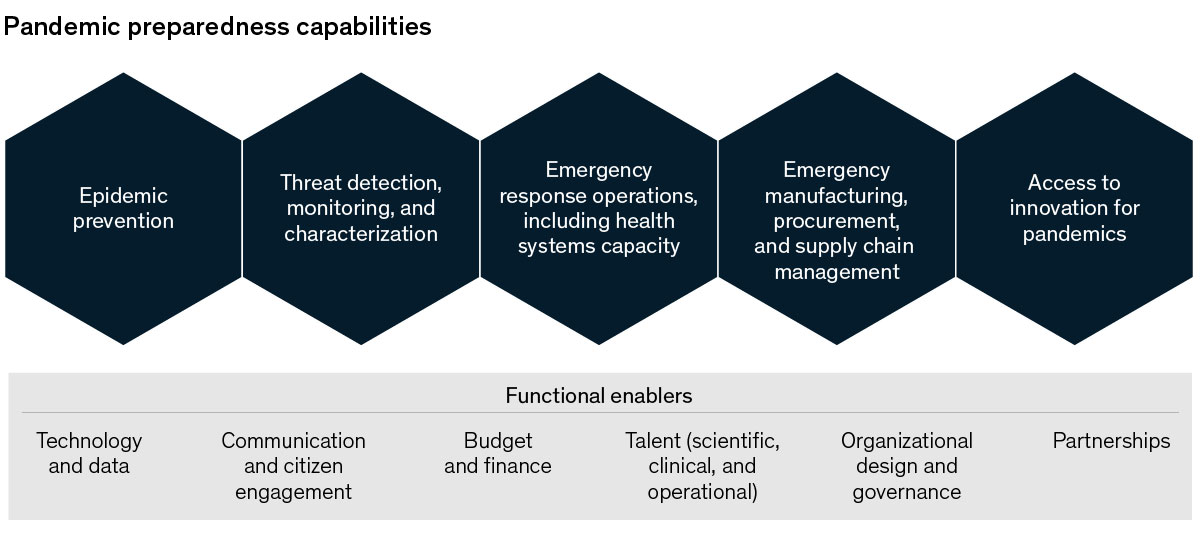 |
| | | | |
|
This week, we look at how globalization is shifting and what companies can do to respond. Plus, two McKinsey experts on how to build better relationships at work, and Tech for Execs on the power of the qubit.
|
|
|
| |
| |
| |
| |
|
No region is self-sufficient. Every region of the world imports 25 percent or more (in value-added terms) of at least one important type of resource or manufactured good that it needs. Asia–Pacific, including China, is the leading global manufacturing exporter overall and the largest supplier of electronics, but it imports more than 25 percent of the energy resources it needs. Europe and North America provide much of the advanced machinery and the intangible expertise that supports production of advanced electronics such as semiconductors, but Europe imports more than 50 percent of the energy resources it needs, while the US imports roughly 70 percent of its consumption needs for 30 mineral commodities. And, of course, the Middle East, sub-Saharan Africa, and Latin America remain big net suppliers of resources—energy, minerals, and food.
|
|
|
Value chain changes. Between 1995 and 2008, truly global value chains were unleashed by trade liberalization and technological progress. Then, patterns of trade flows diverged—with global value chains accounting for about 40 percent of trade flows becoming more concentrated, with the rest stabilizing or becoming less concentrated or more interregional. New forces could now shape the next evolution of some value chains, including semiconductors and pharmaceuticals, spurred by considerations of national security, competitiveness, or resilience. In the case of semiconductors, the United States, the European Union, South Korea, China, and Japan have all announced measures to bolster domestic value chains. Further moves to decouple technologies and restrict data flows could also influence value chains, especially those that are deemed critical to national strategic priorities. Efforts to boost sourcing and improve responsiveness may shorten some supply chains, making them more regional.
|
|
| |
|
| |
| | |
| | |
| |
| | | |
| |
| | | |
| |
|
Our experts serve up a periodic look at the technology concepts leaders need to understand to help their organizations grow and thrive in the digital age.
|
|
|
What it is. Just as a bit is the most basic unit of information in today’s computers, a qubit (short for quantum bit) is the essential unit of information in quantum computing. Unlike conventional binary bits that store in a computer as either a zero or one, quantum bits can represent a combination of both zero and one at the same time, based on a quantum-physics principle called superposition.
|
|
|
The limitation of conventional bits comes into play when today’s computers face a problem with multiple variables. In these scenarios, computers must conduct a new calculation every time a variable is changed. Each calculation is a single path to a single result.
|
|
|
Quantum computers, on the other hand, have an exponentially larger working space, thanks to the nature of qubits. They can explore a gigantic number of paths simultaneously, which is what gives quantum computers the potential to be so much faster and solve complex problems that can’t be solved by today’s computers.
|
|
|
Why it matters. In the past few years, quantum computers have demonstrated that they could outperform today’s most powerful supercomputers at specific tasks. For instance, Google claimed “quantum supremacy” in 2019 when it solved in seconds a problem that would have taken the world’s most powerful supercomputer at the time thousands of years.
|
|
| |
| |
| |
| |
| |
|
— Edited by Barbara Tierney, senior editor, New York |
|
|
| |
|
| Share this Tech for Execs
|
|
|
|
|
| | | |
This email contains information about McKinsey's research, insights, services, or events. By opening our emails or clicking on links, you agree to our use of cookies and web tracking technology. For more information on how we use and protect your information, please review our privacy policy. |
|
|
You received this email because you subscribed to The Shortlist newsletter. |
|
|
|
Copyright © 2022 | McKinsey & Company, 3 World Trade Center, 175 Greenwich Street, New York, NY 10007 |
|
|
|
|
|
|








